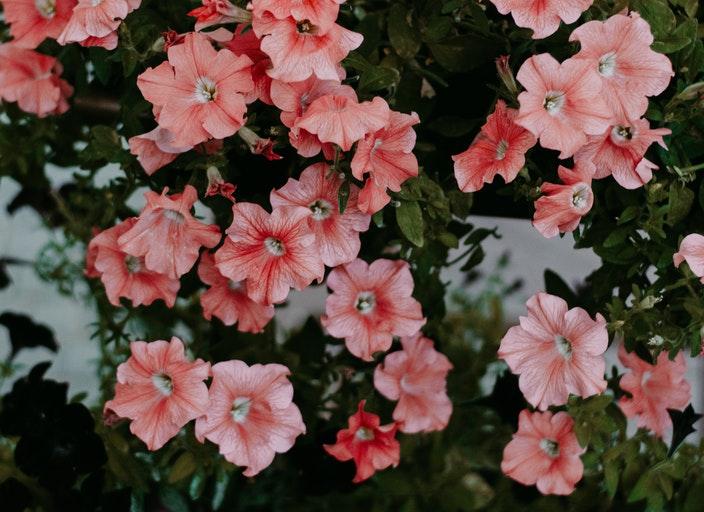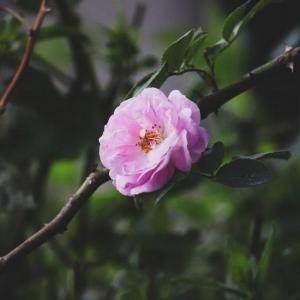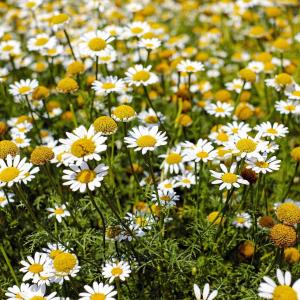
One of the most common garden flowers for borders and pots is the petunia (Petunia spp.). They feature broad, trumpet-shaped blooms and spreading foliage that is hairy and somewhat sticky. They are prolific bloomers and may be found in anything except pure blue. There is a wide range of characteristics found in the petunia genus, and the majority are marketed as hybrids. These characteristics include single and double blooms, ruffled and smooth petals, striped, veined, and solid colors, mounding and cascade growth behaviors, and even some with smell.
Petunias grow quickly as plants. After the final day for frost, they germinate and are ready to be planted outside in approximately 12 weeks, growing to their maximum size by late spring.
Petticoat Care
Petunias typically bloom in the summer, although they may begin in the spring and continue into the autumn before the temperatures drop and the first frost appears. Extreme summer heat might sometimes temporarily stop flowers from blossoming. In order for older petunia cultivars to continue flowering, deadheading (removing wasted flowers) is usually necessary. Although many modern types don't need deadheading, they will still gain from it to get the most flowers possible.
Additionally, petunias will need frequent feeding and watering during the growth season (spring to fall). Additionally, they may value some weather protection, which might include relocating container plants to a safe location or erecting a temporary cover over garden beds.
Light
The majority of petunia types enjoy full sun, which is defined as at least six hours in direct sunlight most days. However, in the summertime, some shade will assist to keep them cool and blossom more effectively (particularly against the intense afternoon light).
Petunias like to grow in a light, healthy soil with adequate drainage. They may grow in a wide range of soil types as long as they drain effectively. Additionally, they like a pH of slightly acidic soil.
Water
Petunias dislike being dry for extended periods of time, like many other blooming annuals. However, they also dislike sitting in moist soil since it might cause their roots to rot. Furthermore, plants with too much water may become lanky and produce few blooms. When there isn't any rainfall, it is often adequate to soak beds once or twice a week in 1 to 2 inches of water. Some spreading kinds and plants cultivated in pots, on the other hand, often need more regular and thorough watering. Don't allow the soil dry out more than 2 inches below the surface.
Thermodynamics and Humidity
Generally speaking, petunias like temperatures between 60 and 75 degrees Fahrenheit during the day and 55 to 65 degrees Fahrenheit at night. Even though they can withstand low temperatures down to roughly 40 degrees Fahrenheit, frost and very cold temperatures will harm and eventually kill the plants. For these blooms, low to moderate humidity levels are ideal.
Fertilizer
Petunias should be fertilized with a balanced fertilizer when they are planted. Compost should also be incorporated into the soil. After that, treat with a liquid fertilizer designed for blooming plants every two to three weeks beginning in July and continuing until the plants begin to fade in the autumn. Check the specific care instructions for your plant since certain spreading kinds need weekly fertilizer.
The petunia variety "Blue Spark Cascadia" boasts sweet-smelling trailing violet blooms.
The white blooms of "Supertunia Silver" have lavender veins and throats. It is a prolific blooming with a high tolerance for harsh conditions.
Large, buttery yellow blooms and excellent weather tolerance are also features of "Prism Sunshine."
Pruning
Pinch down the stems after planting young petunias to promote more branching and a bigger plant. The plant will choose how far back to squeeze. Just pinch an inch or less if the seedling is short and stocky. However, you may pull back the stem by half if the seedling is gangly.
Growing Petunias from Seed: A Guide
The most typical way to get petunias is as young plants from a nursery. However, starting petunias from seed might be worthwhile, particularly if you're aiming for a specific type. Start your seeds at least 10 to 12 weeks before to the anticipated last day of frost in your zone. The procedures for growing petunias from seed are as follows:
On top of a damp seed-starting mixture, scatter the small seeds. Do not bury them; instead, gently push them down since they need light to sprout.
After that, wrap the container with transparent plastic and place it somewhere warm that is out of direct sunlight. Within seven to ten days, seedlings ought to appear.
Once they appear, take the plastic off.
The seedlings may be moved into their own pots after they have three genuine leaves and left there until they are prepared to be moved outside.
Typical Pests & Plant Illnesses
Aphids, flea beetles, slugs, and snails that eat the stems and leaves are some pests that may plague petunia plants.
1 Often, you may just use a powerful water blast to spray bugs off the plants. However, you may apply a pesticide if the infestation is severe and preventing blossoming.
Petunias may be vulnerable to fungus-related illnesses like gray mold, particularly in wet regions.
2 If you live in a humid climate, choose a variety that has a better tolerance for moisture.
Frequently Occurring Petunia Issues
Petunias are tolerant plants that bloom often, but they sometimes have problems that you can manage.
Wilted Leaves or Flowers
Wilted petunia flowers or leaves may occur for a variety of causes, but the majority of them are related to water: either too much or not enough. If the soil is dry, check it and water your petunias. If wet, reduce how often you water.
slender stems
Petunias often grow lanky stems, but it's simple to fix: deadhead blossoms on a regular basis by pinching back. Your petunia will be less lanky when it comes back if you trim its stems to 2 to 3 inches in length if this doesn't help it fill out.
文章
还没有人评论,快来抢沙发!









